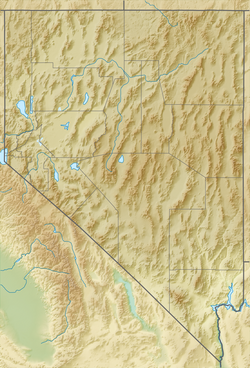| Horse Range | |
|---|---|
| Highest point | |
| Elevation | 2,322 m (7,618 ft) |
| Geography | |
| Country | United States |
| State | Nevada |
| District | Nye County |
| Range coordinates | 38°38′4.786″N115°17′38.079″W / 38.63466278°N 115.29391083°W |
| Topo map | USGS Callaway Well |
The Horse Range is a mountain range in Nye County, Nevada, United States. [1]
